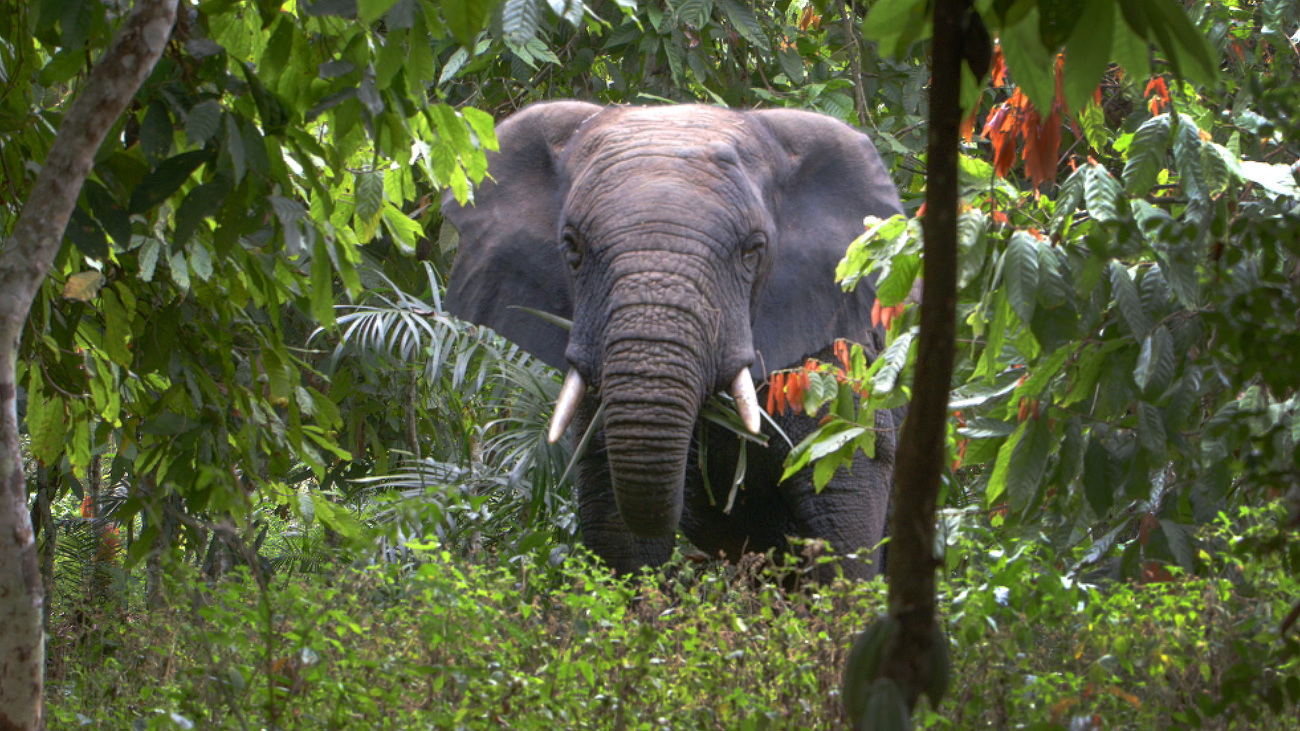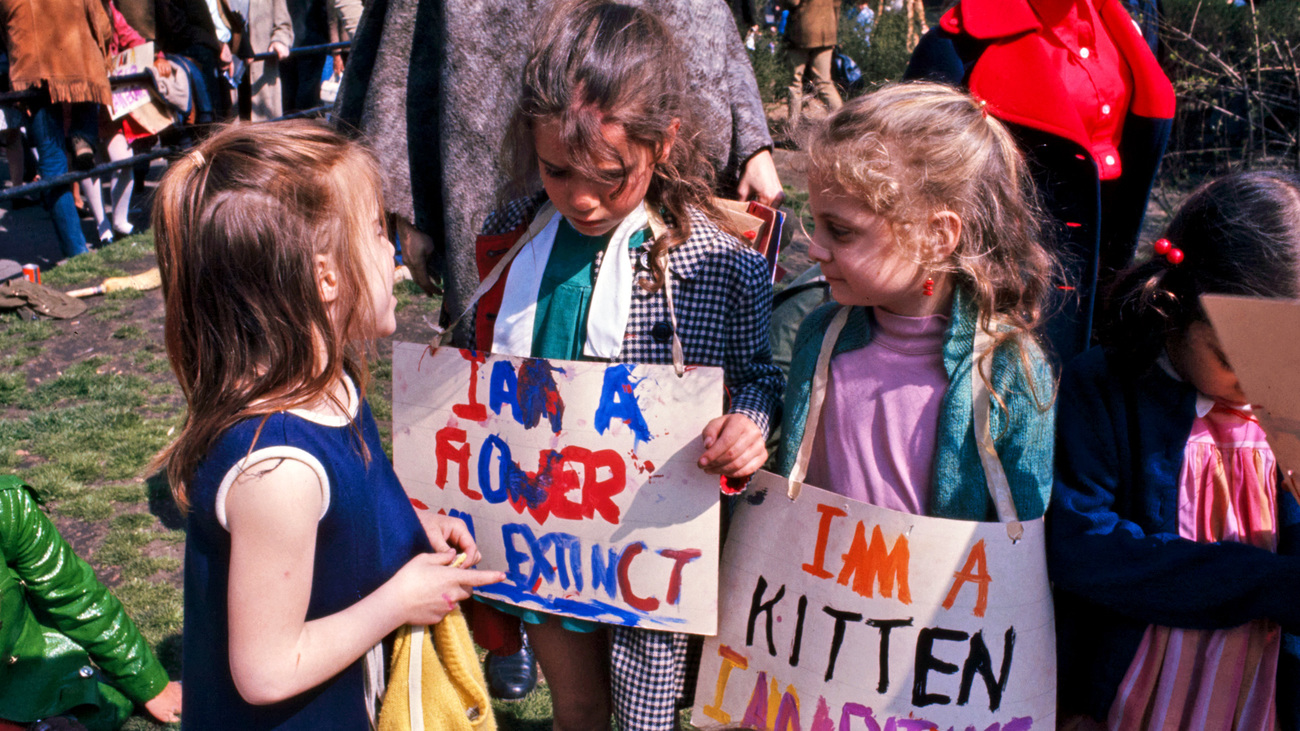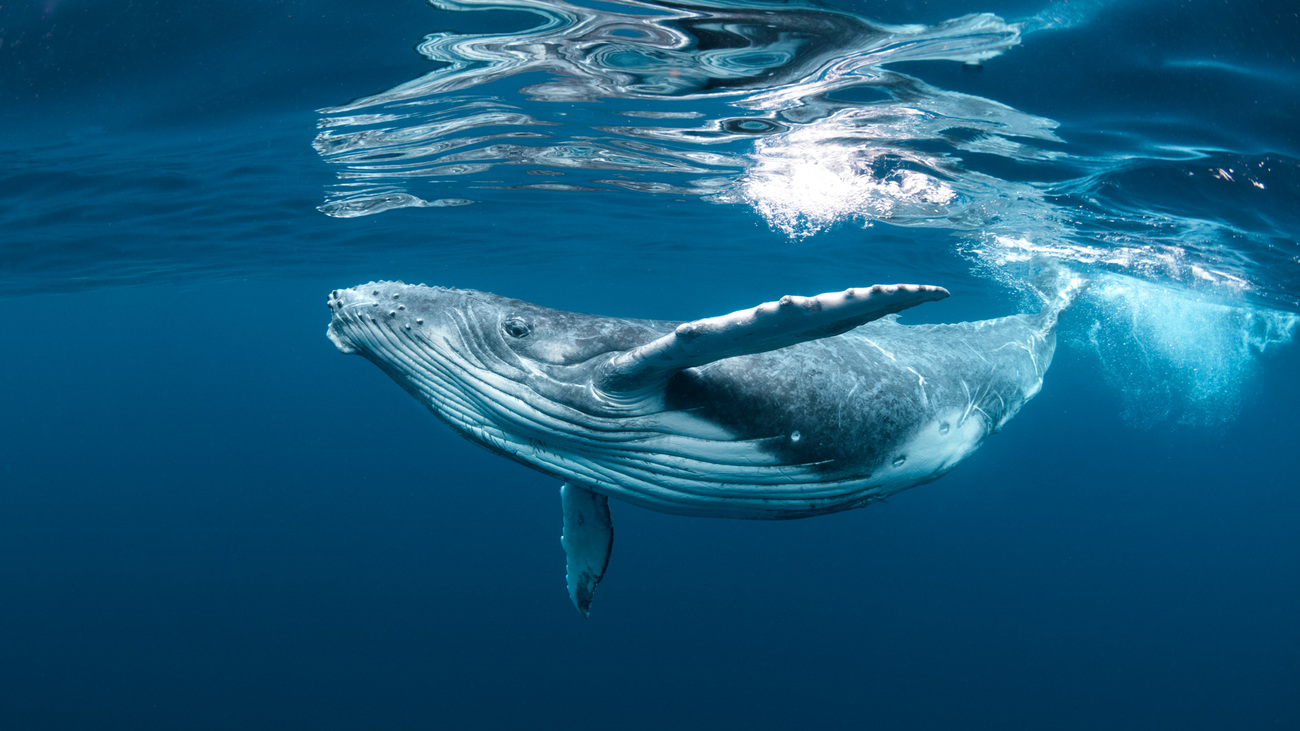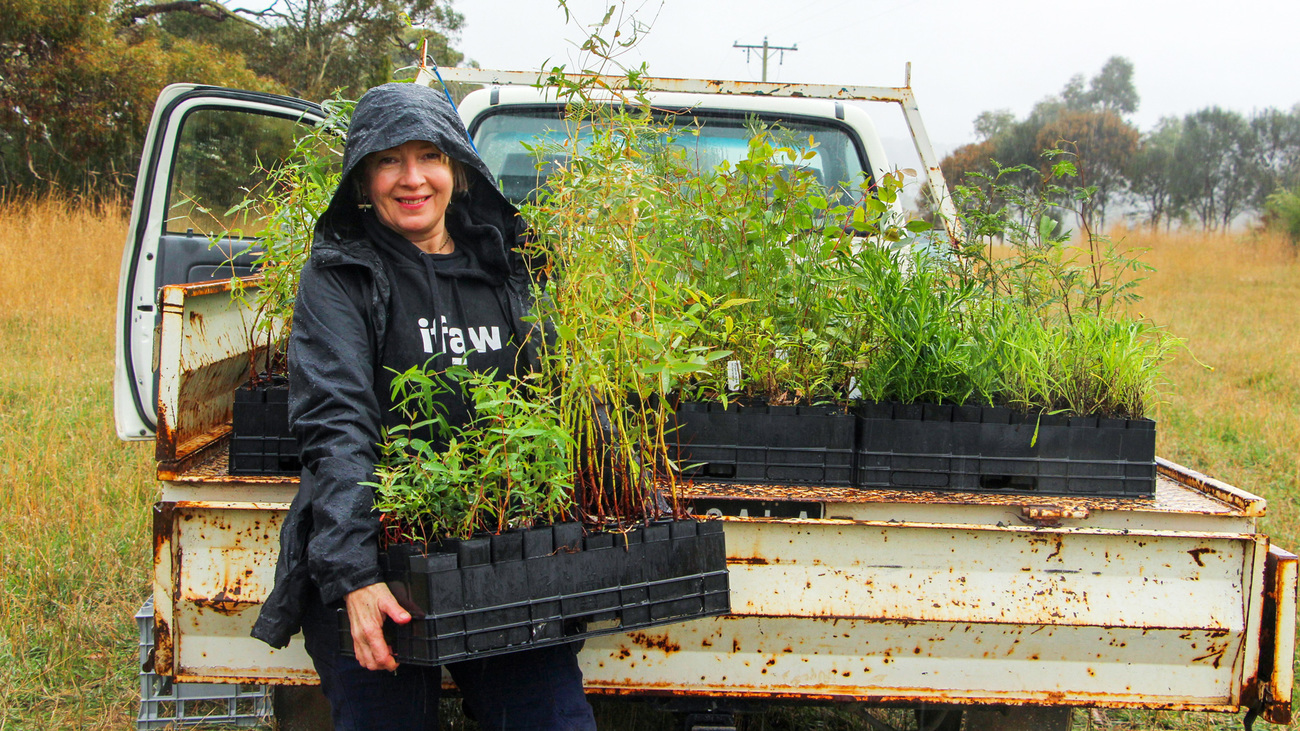What is Earth Day?
What is Earth Day?
Earth Day is a grassroots initiative that has become the world’s largest secular holiday—around the world. Every year, Earth Day falls on 22 April.
So, what exactly is Earth Day, how did it start, and how can you get involved with Earth Day 2025? In this blog, we cover everything you need to know about Earth Day.

A brief history of Earth Day
Earth Day has a somewhat unexpected origin. It all started with the publication of Rachel Carson’s environmental science classic Silent Spring in 1962. In her non-fiction masterpiece, Carson—a biologist and science writer—explored the harmful effects that pesticides were having on the environment, principally the pesticide dichlorodiphenyltrichloroethane (DDT).
Carson argued that pesticides should more accurately be called ‘biocides’ given that they do not exclusively target the pests they are intended to exterminate but instead have many negative downstream effects. Coupled with the fact that DDT is a known carcinogen—an agent capable of causing cancer—she argued for greater moderation and restrictions placed on its usage.
Silent Spring leveraged Carson’s extensive research and the growing body of scientific literature on the subject and advocated for a more controlled use—rather than an outright ban—of DDT. Despite this, Carson was lambasted by the chemical industry and labelled as an extremist whose ideas would do more harm than good.
However, an independent investigation ordered by US President John F. Kennedy backed up Carson’s claims and marked one of the first significant milestones towards a more environmentally conscious America.
Up to this point, the US had been using fossil fuels at an unprecedented level. Leaded gasoline was consumed at an alarming rate to power the ever-growing number of cars on American roads and its booming industry. Pollution was not yet seen as a bad thing—quite the opposite. A sky filled with black clouds and ever-present smog was viewed by many as a sign of a thriving and forward-looking economy.
However, following the publication of Silent Spring and an array of environmental disasters like the Santa Barbara oil spill and Cuyahoga River fire, Americans began to question the effects of pollution. For the first time, it was becoming clear that humans were affecting the environment—a fact that had gone unrecognised before then and is unfortunately still debated by some today.
In 1969, Senator Gaylord Nelson of Wisconsin decided it was time for larger action. Inspired by the impact of recent anti-war protests, the senator orchestrated a campaign to help organise a widespread grassroots event for environmental protection, focusing on leveraging the student population that had been so effective in the anti-war movement.
On 22 April 1970, approximately two million people joined the first Earth Day and participated in rallies across the country. The resulting impact was incredible. The public’s perspective changed immensely and support for environmental protection skyrocketed to an all-time high.
Most importantly, Earth Day created a domino effect. In 1970, the US created the Environmental Protection Agency (EPA) and, over the following years, passed landmark legislation like the Endangered Species Act (ESA) and the Marine Mammal Protection Act (MMPA). By the 1990s, millions of people around the world joined in on Earth Day celebrations, turning it into the global event we recognise today.

What is Earth Day today?
In 2025, Earth Day celebrates its 55th anniversary. The holiday is now bigger than ever, with 192 countries and over one billion people around the world expected to participate in Earth Day events.
The theme for Earth Day 2025 is Our Power, Our Planet. Organisers are calling for global renewable energy generation to be tripled by 2030. They argue that we already have the solutions we need to create clean, inexpensive, and unlimited energy for the whole planet through renewable solar, wind, hydroelectric, tidal, and geothermal technologies. Making full use of these technologies will bring health and economic benefits, as well as a crucial reduction in greenhouse gas emissions.
You can support these efforts and other Earth Day initiatives by:
- Signing the Renewable Energy Petition
- Signing the Global Plastics Treaty
- Joining or registering for an Earth Day event in your area
- Sending a letter to your state legislators urging them to back renewable energy
- Discovering four ways to get involved in Earth Day 2025
- Learning four ways to take action right now
As part of this year’s events, 550,000 trees will be planted by The Canopy Project, 7,500,000 pounds of rubbish will be removed through The Great Global Cleanup, and 1,000,000 schools will integrate climate education into their curricula.
Earth Day and animals
Earth Day is a comprehensive initiative aimed at raising awareness of and tackling the climate crisis from every possible angle. However, one angle that is often overlooked by climate activists is the role that animals play in keeping the environment healthy and balanced.
Animals aren’t just bystanders when it comes to the environment. Too often, we recognise that animals are harmed by the effects of climate change, but we miss the crucial roles that they play in maintaining the health of our planet.
Animals impact the environment on a number of levels—from acting as ecosystem engineers to pollinating plants to storing carbon to improving soil health. Protecting one species can safeguard an entire ecosystem.
Take the example of elephants. These huge mammals clear paths through the landscape. They help sunlight reach plants and animals close to the ground and knock down food which smaller animals can then eat. They also dig water holes that become a vital lifeline for other animals in dry seasons. What’s more, their faeces spread seeds, fertilising the land and helping new food sources to grow.
Similarly, whales have a huge impact on their marine habitats. Their poo fertilises phytoplankton—tiny marine algae which is a primary food source for many ocean creatures, baleen whales included. This phytoplankton also produces more than half of the world’s oxygen. So protecting whales is crucial to marine conservation and the fight against climate change.
Many animals fulfil critical climate functions and are actively helping to slow the rate of climate change. At IFAW, we know that the individual—human or animal—is an indispensable component of the equation for success. We know that a single animal can mean the difference between survival or extinction for an entire species, just as a single person can make tangible positive change.
So, this Earth Day, let’s put the focus on animals and nature-based climate solutions, so we can work together to create the future we all deserve.

Earth Day and global policy
In 2025, Earth Day will be particularly significant as it leads up to some key policy meetings affecting wildlife, including COP30—the 30th UN Climate Change Conference—taking place in Belém, Brazil, this November. This year’s COP is set to be the largest-ever climate COP focused on nature, and particularly forests, given the conference is firmly rooted in the heart of the Amazon.
At COP30, world leaders will come together to discuss and evaluate global climate commitments and push for stronger action. While Earth Day might be grounded in grassroots activism, it builds momentum for major policy discussions at COP30, highlighting the importance of international cooperation in tackling climate change.
Also this year, the UN Oceans Conference (held every three years) will be taking place in Nice, France, in June 2025. Ahead of the conference, IFAW is campaigning for the High Seas Treaty, which would create protected areas in parts of the ocean beyond national jurisdiction, to be ratified by at least 60 countries.
In addition, the IUCN World Conservation Congress (held every four years) will occur in Abu Dhabi, United Arab Emirates, in October 2025.
How can you celebrate Earth Day?
Earth Day celebrations over the last half-century have included incredible efforts: millions of trees planted, hundreds of miles of coastline cleaned, and tens of thousands of people biking to school and work. These impactful initiatives are all successful thanks to the power of individual actions.
Earth Day is a reminder that we can create real change as individuals and communities. We can build the future that we strive for—one where oceans thrive free from plastic pollution, forest ecosystems buzz with biodiversity, and wildlife populations flourish around the world.
Let’s look at a few ideas for how you can get involved in Earth Day 2025.
Organise or attend an Earth Day 2025 event
To celebrate Earth Day 2025, why not hold a teach-in, where you educate people about environmental issues? Or, you could participate in an Earth Day roundtable to share your thoughts about renewable energy and how it can benefit your community, clean up litter in your community by taking part in the Great Global Cleanup, or organise an Earth Day rally or demonstration.
Spread awareness on social media
Social media is one of the most effective tools we have for spreading awareness and educating those around us. Share resources and engage with social media campaigns to help boost the reach of Earth Day 2025 and ensure that as many people as possible are educated on environmental issues.
Consider signing and sharing IFAW’s petitions, such as our petition to end whaling in Iceland. You can also spread awareness and support IFAW by sporting a new t-shirt from our Kirby_J x IFAW collection.
You can help conserve the ocean by urging your country’s government to ratify the High Seas Treaty, an international agreement which would protect marine areas outside national jurisdiction—and share the petition with friends and family.
Support wildlife conservation efforts
Whether it is a small initiative near you or larger projects like the ones we run here at IFAW, supporting wildlife conservation initiatives is one of the best ways to help protect our planet this Earth Day.
It could be as simple as sharing a campaign on social media, donating a small amount of money, or even volunteering. Whatever level of involvement you choose, every little bit helps.
Advocate for animals
One of the most important things to come out of Earth Day has been the passing of various climate-focused legislation, such as the creation of the EPA. To this day, Earth Day still supports forward-thinking climate change policies, even advising and educating at the UN climate COP (Conference of the Parties).
In 2025, you can do your part to advocate for animals by supporting legislation that protects animals and safeguards the natural world to drive systemic change, from small community initiatives to global policies. Help IFAW save critically endangered species like the North Atlantic right whale.
Travel sustainably
Tourism has never been bigger but, unfortunately, its effects on the environment have also never been greater. Support Earth Day year-round by taking steps to travel sustainably and minimise your impact on the environment. Things like offsetting your air travel, spending money locally, and making sure you only interact with wildlife in conscious and sustainable ways go a long way in helping to protect the environment.
Start small
We can’t all combat climate change on a global scale. But we can have an impact on our local communities or gardens. Here are some ideas for smaller-scale things you can do to help your local environment, all year round.
- Organise local events: It might be a coffee morning to share climate change resources, a day litter picking in your nearest park, or a march down the street to raise awareness.
- Promote biodiversity in your garden: Being more climate-conscious starts at home. Consider installing bird feeders and insect houses in your garden, starting a compost heap, and not mowing your lawn to help protect its natural biodiversity
- Be conscious of your diet: One of the best ways to reduce your carbon footprint is by reducing your meat intake. Consider switching to a more plant-based diet and reducing the amount of animal products you consume.
- Choose sustainable products: Building off the above, we can look at how our habits affect the environment outside of our diets. Reducing the amount of animal products, like leather, you use and making sure that any you do use come from sustainable sources can go a long way to protecting the environment. Reducing plastic consumption also greatly benefits animals and the planet.
- Visit a conservation area or sanctuary: Visit local conservation parks and wildlife sanctuaries to not only learn more about how people are helping to protect animals in your local area but also to help support these projects with your patronage.

How IFAW supports Earth Day
Here at IFAW, we believe that animals are key to solving the climate crisis. That’s why we run countless campaigns year-round to help protect and safeguard animal species and the natural world in which they live.
We’re campaigning to lower shipping speeds to reduce ocean noise, and we work to prevent collisions with marine mammals through our Whale Alert app. We’re also striving to protect animals like whales and seals from entanglement in fishing gear by promoting ropeless gear and smart buoys.
Through our Room to Roam initiative, we’re securing and connecting habitats across East and southern Africa, creating safe passages for wildlife. This is resulting in greater biodiversity, reduced human-wildlife conflict, improved resilience to climate change, and a positive future for African wildlife, including elephants, rhinos, cheetahs, and pangolins.
We’re also working with local communities to help them support the ecosystems around their homes. We’re advancing climate-smart agriculture, improving farmer incomes and food security while supporting the environment. And we’re helping communities to develop sustainable ecotourism initiatives and alternative livelihoods so they rely less on natural resources as a primary source of income.
We’re also providing wildlife rangers with the equipment and resources they need to safeguard wildlife and their habitats—helping mitigate climate change. By preventing poaching and illegal logging, rangers protect keystone species like elephants and gorillas (both of which are essential seed dispersers) that help balance the ecosystem, and prevent deforestation (which releases carbon dioxide into the atmosphere, contributing to climate change).
Learn more about IFAW’s work and how you can help.
Related content
Every problem has a solution, every solution needs support.
The problems we face are urgent, complicated, and resistant to change. Real solutions demand creativity, hard work, and involvement from people like you.